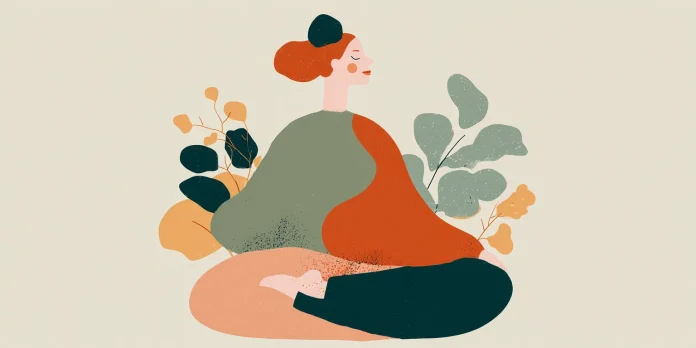Written by Malena Sanchez Moccero
Medically reviewed by Isabela Sorgio (Nutritionist, Mindful Eating Specialist)
What if the secret to a longer, healthier life wasn’t in a pill or trendy superfood—but in everyday, home-cooked meals? In five regions of the world known as “Blue Zones,” people live longer than average and suffer far less from chronic diseases. What’s their secret? In this article, we explore what Blue Zone recipes get right about health—and how you can bring these habits into your own kitchen.
What Are Blue Zones?
The term “Blue Zone” was first introduced by demographer Michel Poulain and physician Gianni Pes, who were studying regions of exceptional longevity, particularly the Nuoro province in Sardinia, Italy. In their research, they used a blue pen to mark the areas on the map where centenarians were clustered—those areas became known as “Blue Zones.”
Explorer and journalist Dan Buettner later popularized the term through his work with National Geographic, expanding the concept globally by identifying four additional regions with similar longevity patterns:
- Sardinia, Italy
- Okinawa, Japan
- Ikaria, Greece
- Nicoya Peninsula, Costa Rica
- Loma Linda, California
Despite their geographic and cultural differences, these communities share key habits—especially when it comes to what’s on their plates.
The Blue Zone Diet: Why It Works
While genes matter, lifestyle and diet are far more influential when it comes to longevity. The Blue Zone diet emphasizes:
- Mostly plant-based foods
- Minimal processed foods
- Very little meat and dairy
- Daily consumption of whole grains, beans, and healthy fats
Research has shown that diets rich in natural, unprocessed foods—like fruits, vegetables, whole grains, and lean proteins—are associated with better health outcomes.
This approach not only reduces the risk of heart disease, diabetes, and cancer—it’s also better for the environment and animal welfare.
8 Blue Zone Food Habits That Promote Longevity
1. Plant-Based Meals
Vegetables, fruits, legumes, and nuts are the stars of every meal. These foods are packed with fiber, antioxidants, and vitamins that support immune and heart health.
2. Whole Grains, Not Refined Carbs
Forget white bread—people in Blue Zones eat brown rice, barley, oats, and quinoa, which stabilize blood sugar and improve gut health.
3. Beans Every Day
From black beans in Costa Rica to garbanzo beans in Sardinia, legumes provide plant protein, fiber, and complex carbs.
One study found that eating half a cup of beans daily may add four years to your life. A 2004 study also found that each 20-gram daily serving of legumes—roughly an ounce—was associated with living around eight years longer.
4. Minimal Animal Products
Meat is eaten just a few times a month—often in portions of 2 ounces or less. Many Blue Zone diets skip dairy altogether, favoring plant-based alternatives like tofu, soy milk, or nut-based cheeses.
This also makes the diet more climate-friendly: livestock farming is one of the largest contributors to greenhouse gas emissions.
5. Healthy Fats
Nuts and extra virgin olive oil provide monounsaturated fats that protect the brain and heart. In Ikaria, people consume up to 6 tablespoons of olive oil per day.
6. Local and Seasonal Ingredients
Rather than relying on imported “superfoods,” Blue Zone meals use what’s locally grown: sweet potatoes in Okinawa, avocados in Loma Linda, and wild greens in Ikaria.
7. Simple, Home-Cooked Recipes
Forget long ingredient lists. Meals are rustic and easy to make: rice with cabbage, roasted chickpeas, or miso soup with tofu.
Meals are shared, not rushed. There’s a strong culture of gratitude, connection, and taking time to enjoy food.
Easy Blue Zone-Inspired Recipes to Try at Home
These nutrient-dense dishes reflect the simplicity and wisdom of Blue Zone cooking:
Ikaria Cabbage with Rice

Sauté chopped cabbage with olive oil and herbs, then simmer with rice. Filling, fiber-rich, and comforting.
Avocado Salad (Loma Linda Style)

Mix avocado, tomato, red onion, and bell pepper with lemon juice and olive oil.
Spicy Roasted Chickpeas (Sardinia)

Toss canned chickpeas with paprika, oregano, garlic powder, and olive oil. Roast until crispy.
Okinawan Sweet Potatoes

Steam or roast purple sweet potatoes and drizzle with sesame oil or miso glaze.
Whole Grain Toast with Nut Butter and Banana

Perfect for breakfast—rich in protein, healthy fats, and natural sweetness.
Brown Rice with Miso Soup

Top rice with warm miso broth, tofu, scallions, and seaweed for a gut-friendly meal.
Costa Rican Gallo Pinto

A hearty mix of black beans and rice cooked with onion, garlic, and bell pepper. Add a splash of salsa Lizano or hot sauce for extra flavor.
Sardinian Minestrone

Simmer white beans, potatoes, carrots, cabbage, and tomatoes with olive oil and herbs. This humble stew is packed with fiber and plant protein.
Habits Backed by Science
Blue Zone eating habits are supported by decades of nutritional and epidemiological research. Plant-forward diets have been shown to:
- Reduce risk of cardiovascular disease
- Improve blood sugar control
- Lower inflammation
- Delay cognitive decline
The data is clear: swapping meat for legumes, choosing whole foods, and eating more plants can extend life and reduce reliance on medications.
It’s Not Just What You Eat
The Blue Zone lifestyle also emphasizes movement, purpose, social connection, and stress reduction. But diet is a powerful place to start.
Blue Zone recipes aren’t just about longevity—they’re about living well. They show us that health doesn’t have to be expensive or complicated. It can be as simple as a bowl of rice and beans, made with love and shared with others.
Better yet? These meals are good for you, good for animals, and good for the planet.
So the next time you cook, take a cue from the world’s longest-living people: eat slowly, eat plants, and eat with purpose.
*Disclaimer: These are general guidelines and should not replace personalized advice from a nutritionist or healthcare professional. Dietary changes, especially those involving meat consumption, should be tailored to individual health needs and nutritional requirements.





